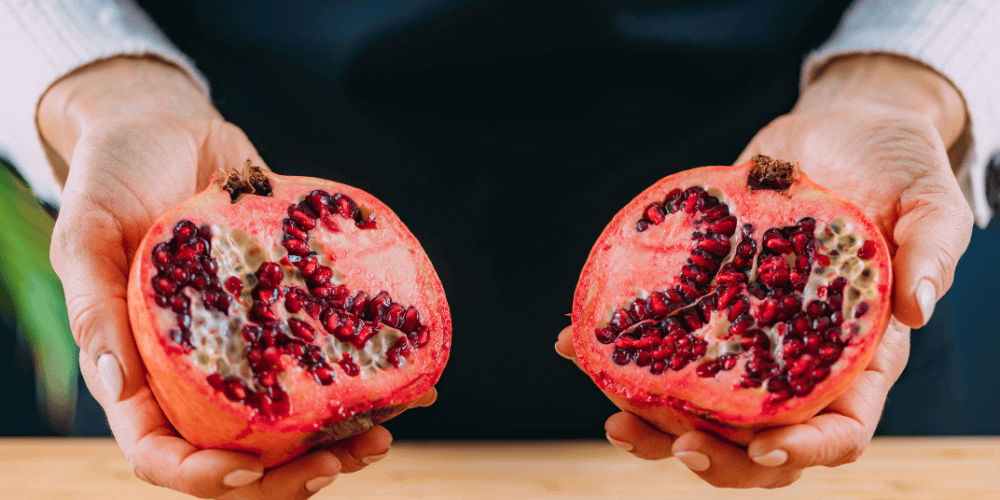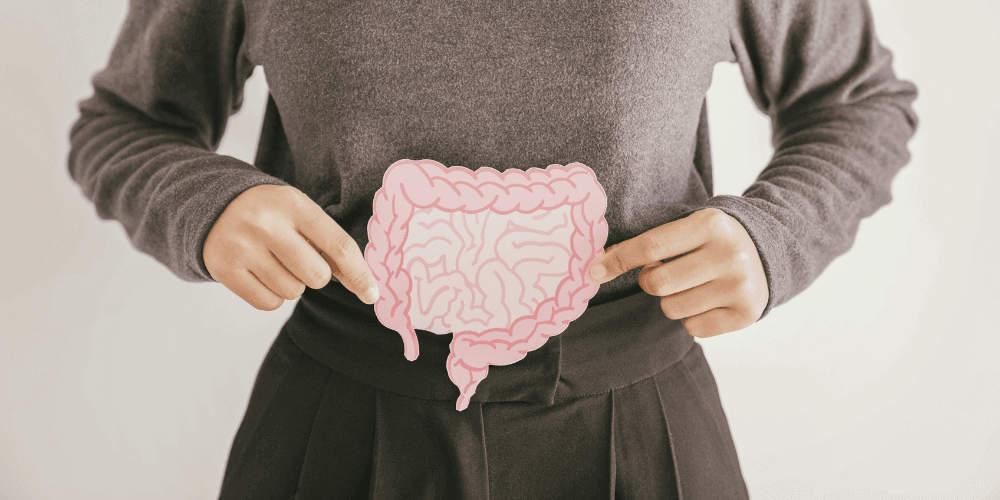Global leader in natural ingredients, Nexira shares how both soluble and insoluble fibers act in the human intestine as complex carbohydrates. Natural dietary fibers from real fruit powders may help promote appetite and blood sugar control and regulation.
In recent years, the pursuit of health and healthier living is an on-going trend. Consumers prioritize health, including gut health and overall wellbeing. According to an Innova market study, 2 in 4 consumers globally are very to extremely interested in having fiber in their food & beverage. Moreover, 60-70 million Americans are subject to digestive discomfort every day. (Reed, 2022) But what are dietary fibers? Why are they important for a balanced diet?
Dietary fibers are complex carbohydrates, well-known for their numerous health benefits. They are scientifically defined as a “non-digestible polysaccharides that are intrinsic and intact in plants”. (Van Alst,) Dietary Fibers are not hydrolyzed by humans’ enzymes in the small intestine because of their complexity and long chain. Thus, body can’t digest these fibers. (Siddiqui et al., 2023)
Dietary fibers are separated in two types: soluble and insoluble fibers. Soluble fibers dissolve in water and mainly play a role in regulating and lowering glucose and blood cholesterol levels. Insoluble fibers can’t dissolve in water. They help food processing through the digestive tractus and help prevent constipation, as they absorb water. (Harvard School of Public Health, 2022) (US Food & Drug Administration, 2021)
Today, the US Food & Drug Daily Reference Value for fiber is 28g for men and women. (US Food & Drug Administration, 2023) However, there is a huge ‘fiber gap’: more than 90% of the US consumers do not meet these recommendations, and the average intake is only about 15g of fibers a day. It is difficult to eat enough fiber through food, and fiber supplement or fortification is an interesting way to increase daily fiber intake. (Ma et al., 2021)
Dietary fibers also have functional properties like water-retention and gel-forming capacity. These properties may positively impact the texture of food products.

Dietary fiber is a major determinant of the composition and function ofintestinal microbiota. Dietary fibers, in particular insoluble fibers, have water-retention properties. An appropriate dietary fiber intake lowers the risk of constipation as it increases the fecal mass. Dietary fibers may also regulate or reduce hunger by adding bulk to the diet and improving the feeling of satiety. Moreover, high-fiber foods are usually low in energy-density and take longer to eat. Soluble fibers may slow the transit of food and delay gastric emptying. (Anderson et al., 2009)
Consuming dietary fibers may lower blood pressure, improve blood glucose and serum lipid concentrations, such as cholesterol. Indeed, soluble fibers have a significant hypocholesterolemic effect, and may help regulating blood cholesterol levels. Research also show that dietary fiber may have a favorable effect on inflammatory markers and immune health in general. Thus, dietary fibers may help weight management and promote metabolic health. (Anderson et al., 2009)
Studies show that an increase fiber intake may reduce both fat and protein digestibility, especially in high fat diets. It is important to balance our protein and fiber intake to meet the recommendations, as well as to globally manage daily fat consumption. (Baer et al., 1997)

As dietary fibers are non-digestible, they will be fermented in the large intestine. This fermentation will lead to the microbial production of short chain fatty acids (SCFA). Many health benefits are related to the production of SCFA, such as a good intestinal motility, which will improve digestion and enhance satiety. There is also a link between SCFA levels and microbiota composition: in the colon, dietary fibers act as prebiotics and will promote the growth of ‘good for health’ bacteria. Indeed, these fibers will act as carbon sources for the fermentation metabolites. Fructo-oligosaccharide (FOS), galacto-oligosaccharides (GOS) and inulin show the most evidence of health benefits. However, all prebiotic dietary fibers show beneficial health effects when consume in appropriate quantity. (Carlson et al., 2018) (Ma et al., 2021)
There is a rising awareness of the benefits of having a healthy microbiome. Improving gut health is the 2nd most desirable health function according to a 2022 Innova survey. Food Industry responds to the consumers insight by launching products with fiber claims. In fact, 1 in 20 launches carry a fiber-related claim, and it represents a Compound Annual Growth Rate of +4,6%.
Consumers ask for fibers-rich foods and beverages is globally increasing. To meet the demand, R&D teams can introduce natural fibers-rich ingredients to their products. Whole grain cereals are a great source of dietary fibers, as well as vegetables and fruits. However, fibers can be deteriorated during process like squeezing for fruit juices. Nexira carefully selects and processes a wide range of natural powders rich in fibers.
Astragalus, also known as huáng qí, are perennial flowering plants indigenous to China. Astragalus powder is sourced from the roots of the plants, carefully cultivated, and harvested. These plants have natural adaptogenic properties, so it is important to regulate their environmental standards like water and soil. Astragalus roots have been used in Chinese medicine for thousands of years as a traditional remedy in their dried form. Indeed, Astragalus powder has a very high-fiber content and is also rich in proteins. The powder is believed to help stimulate the immune system and may help to enhance the body’s response to stress.
Cranberries originally grow on a small tree from cold regions of North America. The cranberry powder is made after dehydration of the berries, to concentrate the intact nutrients and natural components of the fruit. Cranberries are known for their very high content of fiber, as well as their flavonoid content, an antioxidant. Cranberry juice has been consuming in North America for hundreds of years and is also used for non-food application as a natural dye for blankets and clothing. These fiber-rich berries may promote a good intestinal health and digestion. Find them in our Cascading Cranberry Fruit Powder.
Nopal is a North America native plant well-known for its many qualities. The plants are grown and cultivated in arid and semi-arid regions of Africa. Traditionally, Nopal is widely used as a vegetable in Mexican and Latin American cuisine, including that of the ancient Aztecs and the Mayans. Nopal Leaf Powder is thought to be “good for the gut” as leaves contain a high content of fibers – mucilage, and minerals. Consuming nopal powder may help to improve digestion and possibly provide gut relief.
Nexira offers a wide range natural fibers-rich ingredient, and we will present are some of the interesting powders to enhance nutritional value of food products. Baobab pulp, sourced in the the savannahs and dry regions of Africa, is a good source of fibers, minerals, and antioxidants. Baobab powder may help to enhance digestion when added to food products or to meals. Beet Juice powder, sourced in France, is cold-pressed to retain key nutrients such as fiber and potassium. Mangosteen, Matcha and Prickly pear are also good sources of dietary fibers that may help to improve digestion. Turmeric powder, easily recognizable for its vibrant yellow to deep orange color, contains a great amount of natural fiber and carotenoid, that promote an overall good gut health. Hemp has also an interesting content of fibers and a very high content of complete plant-based proteins. With an optimal Omega-6 to Omega-3 ratio of 3:1, Hemp seed powder is a strong balance between the protein and fiber content.
Integrating specific natural ingredients may help improve digestion and gut health. As we explained in this article, natural ingredient powders are an interesting solution to increasing food intake of both soluble and insoluble fibers. Nexira developed these products as part of POW(D)ER from Mother Nature, an innovative range of powerful ingredients. The nutrient-dense range of powders from Nexira is 100% natural and minimally processed.
Join Nexira on this sensory journey encompassing taste, texture, and color – and start creating nutrition that is evolutive with market trends, harnessing the powerful forces of nature in recognizable superfoods – in a whole new way!
Anderson, J.W., Baird, P., Davis, R.H., Jr, Ferreri, S., Knudtson, M., Koraym, A., Waters, V., et Williams, C.L., 2009. Health benefits of dietary fiber. Nutrition Reviews, volume 67, n° 4. p. 188-205
Baer, D.J., Rumpler, W.V., Miles, C.W., et Fahey, G.C., 1997. Dietary fiber decreases the metabolizable energy content and nutrient digestibility of mixed diets fed to humans. The Journal of Nutrition, volume 127, n° 4. p. 579-586
Carlson, J.L., Erickson, J.M., Lloyd, B.B., et Slavin, J.L., 2018. Health Effects and Sources of Prebiotic Dietary Fiber. Current Developments in Nutrition, volume 2, n° 3. p. nzy005
Harvard School of Public Health., 2022. Fiber In The Nutrition Source.
Ma, W., Nguyen, L.H., Song, M., Wang, D.D., Franzosa, E.A., Cao, Y., Joshi, A., Drew, D.A., Mehta, R., Ivey, K.L., Strate, L.L., Giovannucci, E.L., Izard, J., Garrett, W., Rimm, E.B., Huttenhower, C., et Chan, A.T., 2021. Dietary fiber intake, the gut microbiome, and chronic systemic inflammation in a cohort of adult men. Genome Medicine, volume 13, n° 1. p. 102
Reed, C., 2022. New survey finds forty percent of Americans’ daily lives are disrupted by digestive troubles In American Gastroenterological Association.
Siddiqui, H., Sultan, Z., Yousuf, O., Malik, M., et Younis, K., 2023. A review of the health benefits, functional properties, and ultrasound-assisted dietary fiber extraction. Bioactive Carbohydrates and Dietary Fibre, volume 30, p. 100356
US Food & Drug Administration., 2021. Interactive Nutrition Facts Label – Dietary Fiber.
US Food & Drug Administration., 2023. 21 CFR 101.9 — Nutrition labeling of food. In Code of Federal Regulations.
Van Alst, M. Dietary Fiber – Navigating the FDA’s Definition In Eurofins Scientific.